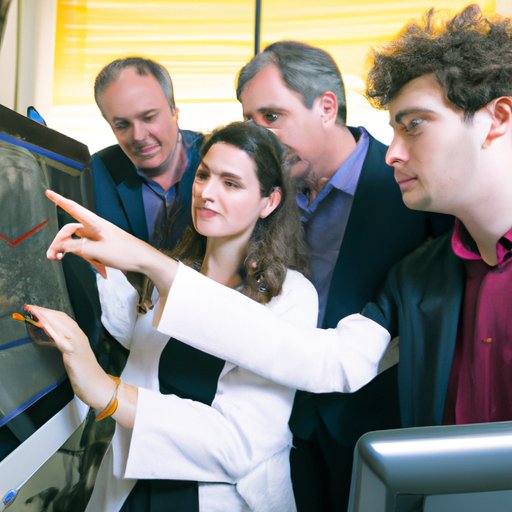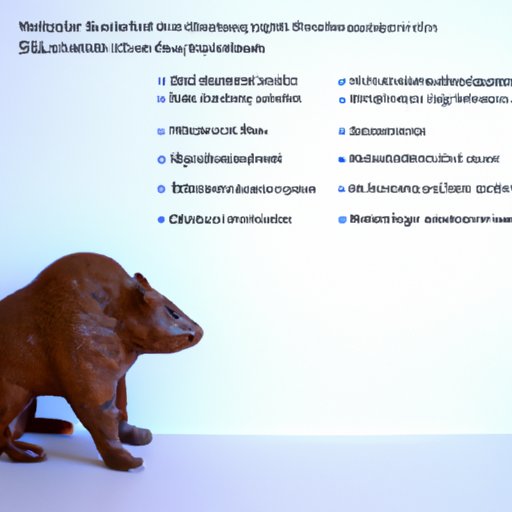Introduction
Models are an essential tool in science, helping researchers to understand complex interactions, test hypotheses, and predict outcomes. In this article, we’ll explore the benefits of models in science and look at how they can be used to represent real-world phenomena.
Exploring the Impact of Modeling on Scientific Concepts
Models are representations of reality that allow scientists to analyze and explain natural phenomena. According to Professor John Harte, a scientist at the University of California, Berkeley, “Modeling is a way of taking what we know about a system and using it to make predictions about how it will behave in the future.”
Models are useful in science because they allow researchers to study complex interactions without having to manipulate the real-world environment. For example, models can be used to simulate how a new drug might interact with the human body, or how climate change might affect the environment.
Models also provide a way for scientists to visualize abstract concepts, such as the behavior of particles or the flow of energy. By providing a graphical representation of a concept, models can make difficult concepts easier to understand and communicate.

Examining How Models Help Scientists Predict Outcomes
One of the primary uses of models in science is to make predictions about the future. Models can be used to test hypotheses and generate forecasts about potential outcomes. For example, a model might be used to predict the path of a hurricane, or the effects of a new policy on the economy.
Computer simulations are a type of model that can be used to make predictions about complex systems. Computer simulations enable researchers to study how different factors interact and influence each other over time. This allows scientists to make predictions about how a system might evolve in the future.

Investigating the Usefulness of Computer Simulations in Science
Computer simulations offer several advantages over traditional models. They are able to incorporate more variables than traditional models, which makes them more accurate. Additionally, computer simulations can run faster than real-time, allowing researchers to explore more scenarios in less time.
Computer simulations have been used in a variety of fields, including physics, chemistry, biology, and economics. For example, computer simulations have been used to study the behavior of subatomic particles, the evolution of species, and the dynamics of financial markets.

Analyzing the Role of Models in Experiments
Models can also be used to design and interpret experiments. By simulating an experiment beforehand, scientists can identify potential flaws in the design and make adjustments before conducting the actual experiment. Models can also be used to analyze experimental data and draw conclusions from the results.
It’s important to note that models must be validated before they can be used to make reliable predictions. Validation involves testing the model against real-world data to ensure that it produces accurate results.
Demonstrating How Models Facilitate Understanding of Complex Systems
Models can also be used to facilitate understanding of complex systems. Models can provide a visual representation of a system, making it easier to understand the relationships between its components. This can be especially helpful when studying large, interconnected systems, such as ecosystems or economies.
For example, mathematical models have been used to represent the behavior of populations in ecosystems. These models can help researchers understand how different species interact and how disturbances, such as pollution or climate change, might affect the system.

Evaluating the Benefits of Using Models in Research
Overall, models are an invaluable tool in science. They allow researchers to study complex interactions, test hypotheses, and make predictions about potential outcomes. Models also provide a way to visualize abstract concepts and facilitate understanding of complex systems.
However, there are some disadvantages to using models in research. Models can be expensive and time-consuming to develop, and they can be limited by the accuracy of available data. Additionally, models may not accurately reflect real-world phenomena, so they must be validated before they can be used.
Comparing Different Types of Models Used in Science
There are many different types of models used in science. Commonly used models include mathematical models, physical models, and computer simulations. Each type of model has its own advantages and disadvantages.
Mathematical models are equations that describe the behavior of a system. They are relatively simple to create and can be used to make predictions about how a system might evolve over time. However, they are limited by the accuracy of the data used to create them.
Physical models are physical representations of a system. They are useful for visualizing abstract concepts, but they can be expensive and time-consuming to create. Additionally, physical models are limited by the accuracy of the materials used to construct them.
Computer simulations are digital models that use algorithms to simulate the behavior of a system. They are powerful tools for making predictions and can incorporate more variables than traditional models. However, they can be costly and time-consuming to develop.
Conclusion
In conclusion, models are an invaluable tool in science. They allow researchers to understand complex interactions, test hypotheses, and make predictions about potential outcomes. Models also provide a way to visualize abstract concepts and facilitate understanding of complex systems.
Models come in a variety of forms, including mathematical models, physical models, and computer simulations. Each type of model has its own strengths and weaknesses, and it’s important to choose the right type of model for the task at hand.
Overall, models are a powerful tool that can be used to gain insight into the behavior of complex systems. By using models, scientists can gain a better understanding of the world around us and make more informed decisions.
(Note: Is this article not meeting your expectations? Do you have knowledge or insights to share? Unlock new opportunities and expand your reach by joining our authors team. Click Registration to join us and share your expertise with our readers.)
